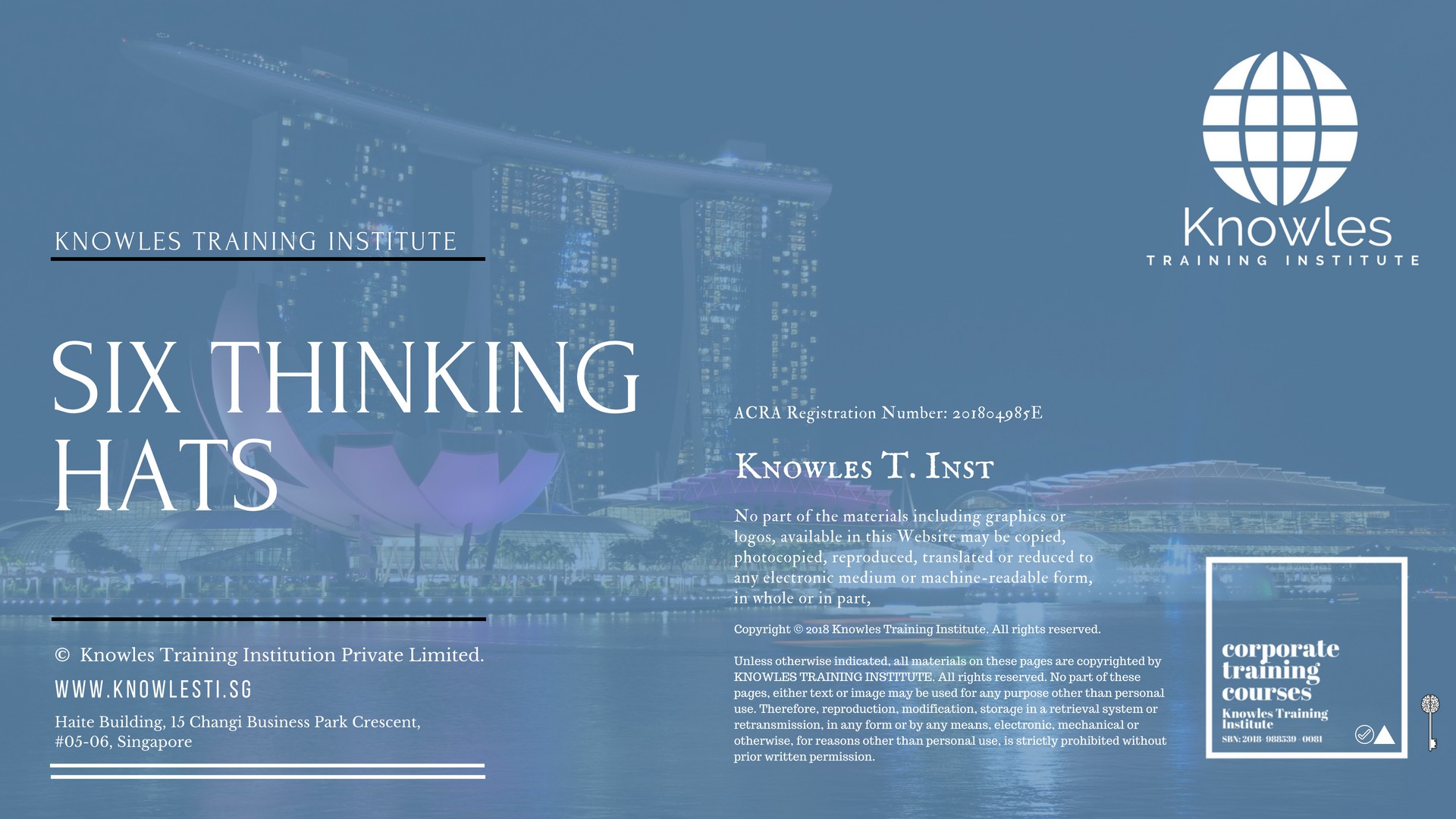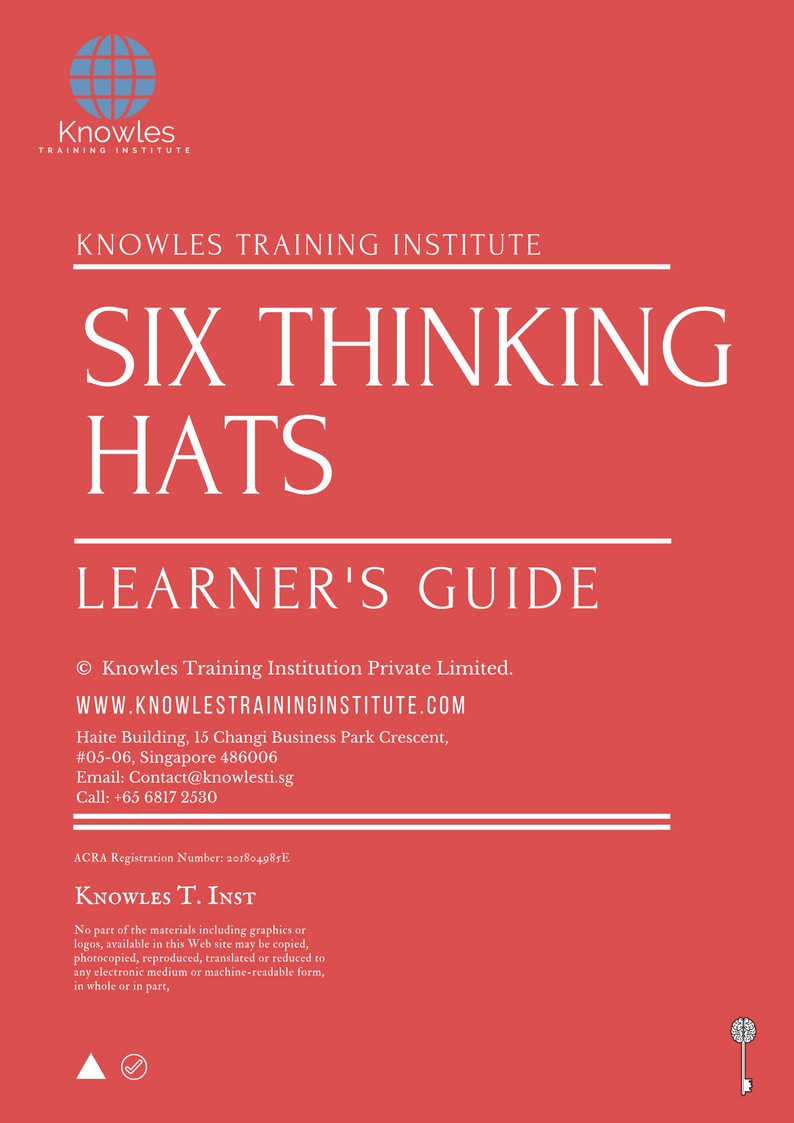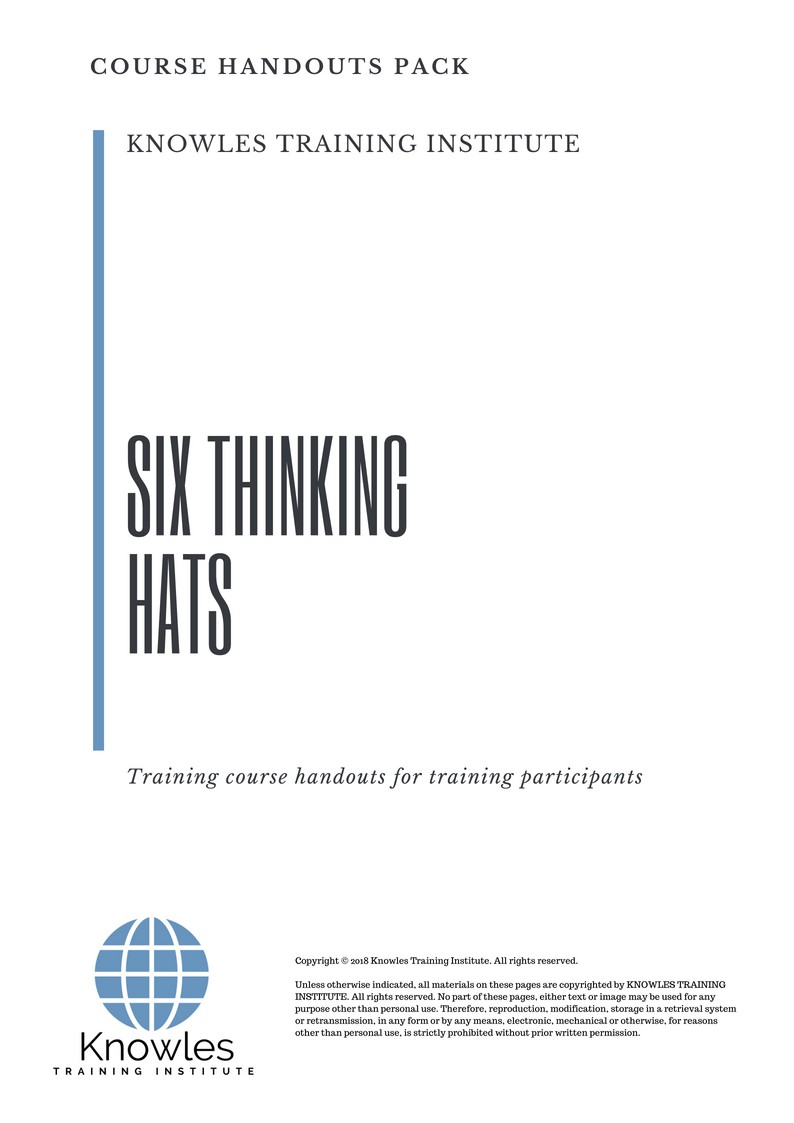Six Thinking Hats Course in China

About This Six Thinking Hats Training Course in China
Six Thinking Hats Course in China
Edward de Bono developed a decision-making tool for group discussions that involves donning on six different perspectives in thinking. He called it the “Six Thinking Hats” which was published as a book with the same title in 1985. This technique is an ideal way to conduct an organized and detailed discussion with a group.
Who Should Attend This Six Thinking Hats Course in China Workshop
This Six Thinking Hats Course in China workshop is ideal for anyone who would like to gain a strong grasp and improve their Six Thinking Hats.
All Staff Within An Organisation
Managers
Team Leaders
Executives
Assistants
Officers
Secretaries
Group Size For This Six Thinking Hats Training Program in China
The ideal group size for this Six Thinking Hats course in China is:
Minimum: 5 Participants
Maximum: 15 Participants
Course Duration For This Six Thinking Hats Skills Course in China
The duration of this Six Thinking Hats Course in China workshop is 2 full days. Knowles Training Institute China will also be able to contextualised this workshop according to different durations; 3 full days, 1 day, half day, 90 minutes and 60 minutes.
2 Full Days
9 a.m to 5 p.m
Six Thinking Hats Course in China Benefits
Below is the list of course benefits of our Six Thinking Hats course in China
- A powerful meeting facilitation method that surfaces concealed agendas and manage objectives without friction.
- A method to make certain that all sides of an issue are discussed.
- A device that works great in various cultures in a business environment.
- A sharpened capability to think acutely, objectively, orderly & creatively.
Six Thinking Hats Course in China Objectives
Below is the list of course objectives of our Six Thinking Hats course in China
•Explain the reason for the need to use the Method to think over serious problems.
•Determine the purpose of each of the 6 Hats and the circumstances in which their employment becomes necessary.
•Discover when to use the appropriate hat to assure that essential aspects and perceptions are recognised and understood.
•Discover to use the hats to create effective presentations.
•Determine to use the hats to facilitate essential meetings, forums and discussions.
Six Thinking Hats Course in China Value Added Materials
Each participant will receive the following materials for the Six Thinking Hats course in China
Six Thinking Hats Course in China Learner’s Guide

Six Thinking Hats Course in China Handouts

Six Thinking Hats PPT Course in China Slides Used During Course

Six Thinking Hats Course in China Certification
Each course participant will receive a certification of training completion

Course Fees For Six Thinking Hats Training Course in China
There are 4 pricing options available for this Six Thinking Hats training course in China. Course participants not in China may choose to sign up for our online Six Thinking Hats training course in China.
- USD 1019.96 For a 60-minute Lunch Talk Session.
- USD 434.96 For a Half Day Course Per Participant.
- USD 659.96 For a 1 Day Course Per Participant.
- USD 884.96 For a 2 Day Course Per Participant.
Discounts available for more than 2 participants.
Upcoming Six Thinking Hats Training Course in China Schedule
Contact us for the latest Six Thinking Hats course in China schedules:
Email: contact@knowlesti.cn
Message:
Download Six Thinking Hats Course in China Brochure

Request for this Six Thinking Hats course in China brochure. Fill up the short information below and we will send it to you right away!
Post Training Support: A vast majority of training does not have any effect beyond 120 days. To work, training has to have a strong pre- and post-training component. Post-training reinforcement helps individuals to recall the understanding and ask questions.
Blended Learning: Learning does not occur in the classroom. Virtually everybody prefers distinct ways of learning. Successful learning should have a multi-channel, multi-modal strategy.
- We Understand The Industry: We’ve got a profound comprehension of the business, business design, challenges, strategy and the that our participants are in and have designed the courseware to cater to their professional needs.
- Course Content: Knowles Training Institute’s material is relevant, of high quality and provide specific learning results. Participants will leave the training course feeling as they have gained a strong understanding and will also be in a position to execute what they have learned sensibly.
Course Development — The workshop modules follow a systematic and logical arrangement. This structure helps to ensure that the course material allows the facilitators to deliver the course in a logical arrangement. Consider the subjects as building bricks into learning, our facilitators slowly build towards a comprehensive picture of this entire topic.


Course Enquiries

Fill up the form and we will get back to you in less than 1 working day.
Alternatively, give us a call to have one of our training consultants contact you. Our corporate training courses can be contextualized to meet your organization’s training needs. Leverage on our large pool of professional trainers and consultants for your organization’s training needs.
Email: contact@knowlesti.cn
We Guarantee 100% Privacy. We Respect Your Privacy. Your Information Will Never Be Shared.

